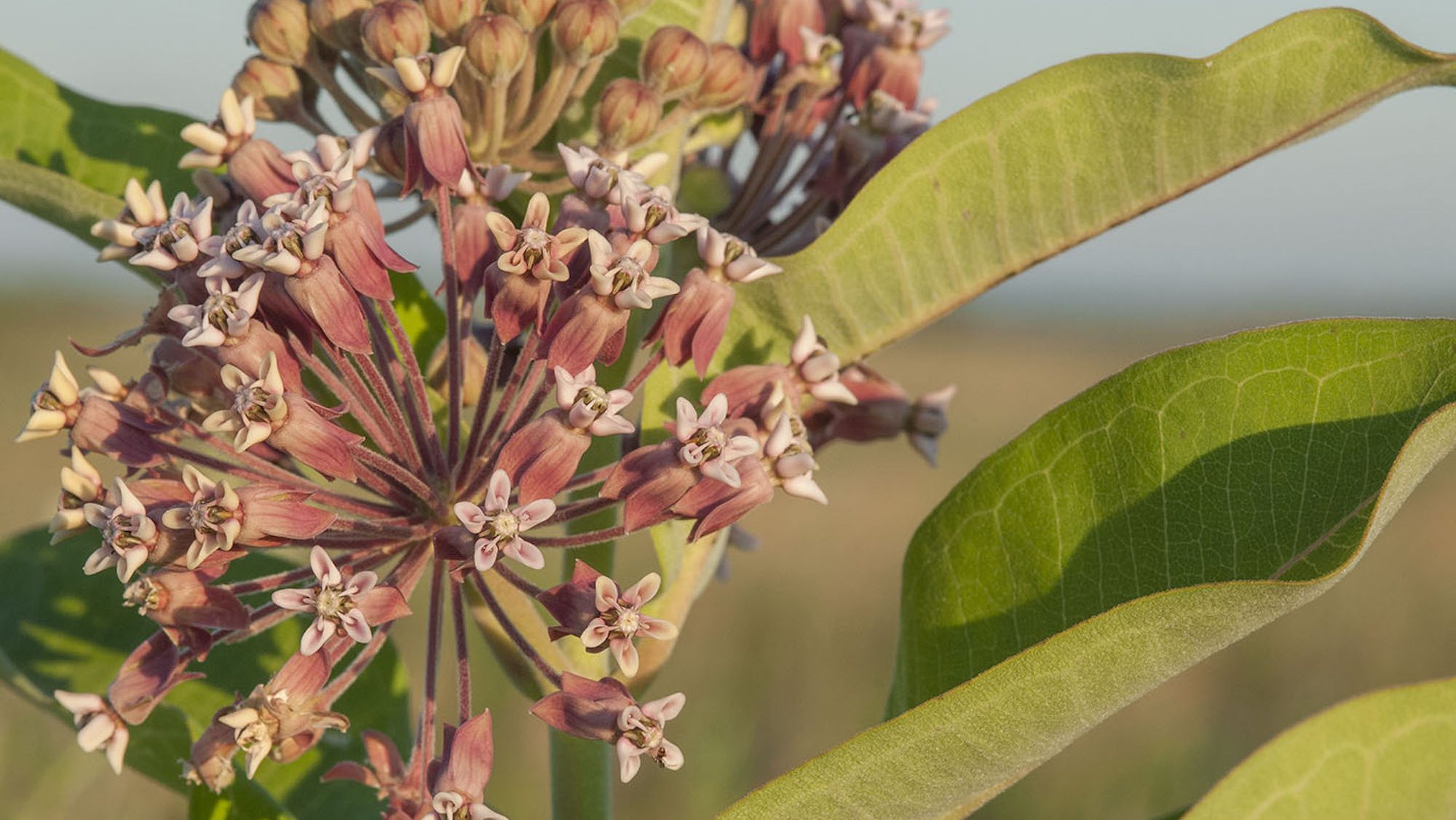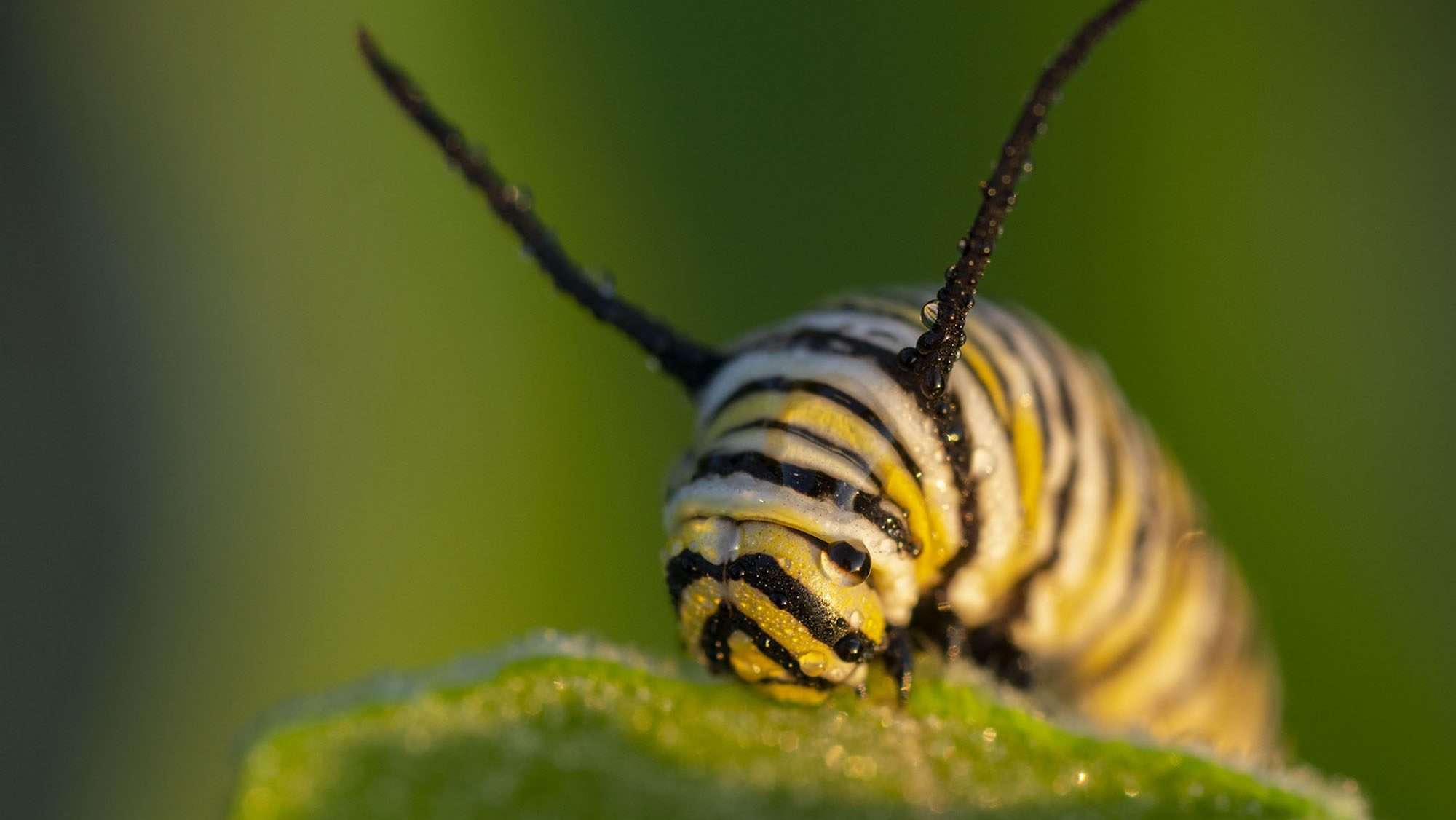Most researchers assume cattle avoid milkweed due to toxic compounds. New research finds that cattle graze milkweeds at least as much as grasses, which could have implications for monarch butterfly conservation planning.
The Gist
Every school kid learns that monarch butterflies are avoided by birds, thanks to the butterflies’ diet (as caterpillars) of toxic milkweed. Many similarly believe that milkweed is toxic to cattle, even though common milkweed – one of the most common species on Central United States grasslands – has low toxicity to cattle.
The new paper, published in the journal Rangeland Ecology & Management, found that cattle eat milkweed some milkweed species at least as much as the surrounding grass. The research specifically looked at patch-burn grazing management, a method of management in which a portion of a grassland is burned each year and grazing ruminants can select from either the recently burned or unburned portions. Commonly employed in conservation ranching programs, patch-burn grazing is designed to mimic pre-1800s fire and grazing patterns in the central United States.
The research also found that milkweed abundance was higher in ungrazed areas than grazed areas.

The Big Picture
Monarch butterfly populations have declined significantly in recent years, and the species has been petitioned for protection under the Endangered Species Act. A major contributing factor to the decline has been the loss of milkweed due to shifts in herbicide use and conversion of grassland to cropland.
Conservationists have called for approximately 1.6 billion milkweed stems to be planted in the midwestern United States, but these efforts have largely ignored rangeland grazed by livestock.
“A lot of milkweed recovery efforts have focused on roadsides, parks and croplands,” says paper coauthor Chris Helzer, director of science for The Nature Conservancy in Nebraska. “But there are millions and millions of acres of rangeland that have milkweed.”
As the paper notes, the assumption “that cattle avoid grazing milkweeds has led to the assumption that milkweeds are near maximum abundance in rangelands, meaning that efforts to increase milkweed abundance on rangelands would be futile.”
But the paper shows that cattle do graze milkweed and that milkweed grazing is likely decreasing milkweed abundance.

The Takeaway
Some ranch managers, viewing milkweed as a toxic plant, have sought to reduce the plant on rangelands. “The good news is that cattle safely graze common and showy milkweed, meaning that control efforts aimed at these plants are likely unnecessary,” says Helzer.
The paper suggests that rangelands can play a role in milkweed and monarch conservation, although cattle grazing habits of the plant present a challenge. The paper’s authors suggest that future work “should examine how to increase milkweed abundance without affecting cattle weight gain, possibly by deferring grazing in some areas during critical milkweed growth periods.”
That may not be possible on many ranchlands, Helzer notes. But he points to many areas under conservation grazing regimes, including Nature Conservancy preserves and partnerships.
“There are many grazing strategies that could be employed,” he says. “On the Great Plains, the we’re trying to promote habitat heterogeneity. How does milkweed fit into that? This research is one little piece of a much, larger complex issue, but it helps us think about grazing lands and how they can contribute to monarch conservation efforts.”
